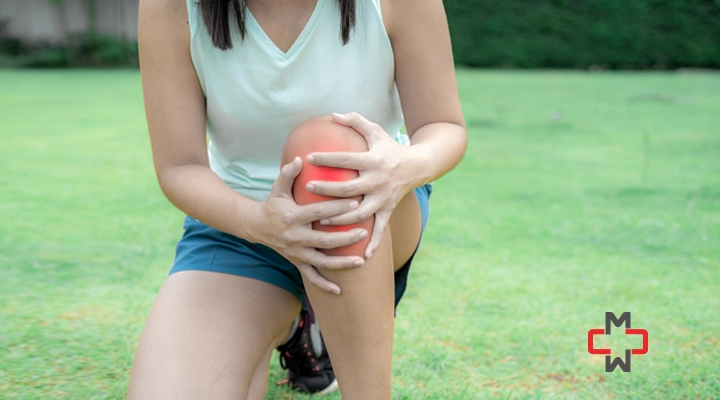Have you ever experienced a sudden sharp pain in your muscles? – It could possibly be a muscle strain – a common injury that can occur during any physical activity or even daily tasks.
Regardless, if you’re an athlete who’s pushing the physical limits or simply going about your routine, muscle strains can surely disrupt your life.
But fear not – In today’s blog, we will reveal 8 of the most effective tips on how to speed up muscle strain recovery and get you back to your peak performance.
What is a Muscle Strain?
A muscle strain, commonly known as a pulled muscle, occurs when muscle fibers stretch or tear beyond their capacity. This often happens during activities that require sudden or excessive exertion. The severity of a muscle strain can range from mild discomfort to severe pain, depending on the extent of the injury.
What Causes Muscle Strains?
Muscle strains can be triggered by various factors, including:
- Overexertion: Pushing your muscles beyond their limits, especially without proper warm-up or conditioning.
- Poor Posture: Incorrect posture during physical activities or prolonged sitting can strain muscles over time.
- Sudden Movements: Abrupt movements or twisting motions that strain the muscles beyond their usual range of motion.
- Muscle Imbalance: Weakness or tightness in certain muscle groups can increase the risk of pulled muscle during physical activity.
Importance of Treating Muscle Strains
Ignoring a muscle strain can lead to prolonged discomfort, minimized movement, and even further injury. Proper treatment in a timely manner is essential to prevent complications and pace up the muscle strain recovery.
By addressing a muscle strain early on, you can minimize pain, inflammation, and the risk of re-injury, allowing you to return to your usual activities sooner.
Symptoms of a Muscle Strain
Recognizing the symptoms of a muscle strain can help you promptly take an appropriate action:
- Pain or tenderness in the affected muscle.
- Swelling, bruising, or redness in the injured area.
- Limited range of motion or difficulty moving the muscle.
- Muscle stiffness or weakness, especially during activity.
- A popping or snapping sensation at the time of injury.
How Long Does it Take to Recover From a Muscle Strain?
The muscle strain recovery time depends on various factors, including the severity of the injury, your overall health, and how well you follow the treatment plan.
Mild strains may heal within a few days to a week with adequate rest, ice, compression, and elevation (RICE therapy); while more severe strains may require several weeks or even months of rehabilitation.
Tips on How To Speed Up Muscle Strain Recovery
Listed below are 8 of the most effective tips on how to speed up muscle strain recovery:
- Rest and Avoid Overexertion: Give your injured muscle time to heal by avoiding activities that aggravate the pulled muscle. Adequate rest is crucial in the early stages of recovery to prevent further damage.
- Apply Ice Packs: Reduce pain and inflammation by applying ice packs to the affected area for 15-20 minutes every few hours during the first 48 hours after injury.
- Compression Therapy: Use compression bandages or wraps to support the injured muscle and reduce swelling. Ensure that the compression is snug but not too tight to restrict circulation.
- Elevate the Injured Limb: Elevating the injured limb above heart level can help minimize swelling and promote fluid drainage from the injured area.
- Gentle Stretching and Mobility Exercises: Once the acute pain subsides, gently stretch and perform range-of-motion exercises to prevent stiffness and promote healing. Avoid overstretching or aggressive movements that may worsen the pulled muscle.
- Heat Therapy: After the initial inflammatory phase, apply heat packs or take warm baths to relax the muscles, improve circulation, and get rid of muscle tension.
- Massage Therapy: Consider massage therapy to reduce muscle tension, improve flexibility, and promote blood flow to the injured area. Choose a qualified physical therapist experienced in treating muscle pulled muscle.
- Gradual Return to Activity: Gradually reintroduce physical activity once the pain and swelling have subsided. Start with low-impact exercises and gradually increase intensity and duration as tolerated.
Frequently Asked Questions
Should I stretch a strained muscle?
Initially, avoid stretching a strained muscle. Adequate rest is essential for healing. Gentle stretching can be introduced during the healing process under guidance.
What are the stages of muscle strain healing?
The stages include: inflammation (acute phase), repair (subacute phase), and remodeling (chronic phase). Each phase involves specific biological processes to heal the injured muscle tissue.
Is heat good for a pulled muscle?
Heat can be beneficial for a pulled muscle, especially during the repair phase (after the acute phase). It helps relax the muscle, improve circulation, and alleviate tension.
– Disclaimer –
This blog is for informational & educational purposes only, and does not intend to substitute any professional medical advice or consultation. For any health related concerns, please consult with your physician, or call 911.
-
About The Author
Dr. Syra Hanif M.D.Board Certified Primary Care Physician
Dr. Syra Hanif is a board-certified Primary Care Physician (PCP) dedicated to providing compassionate, patient-centered healthcare.
Read More







